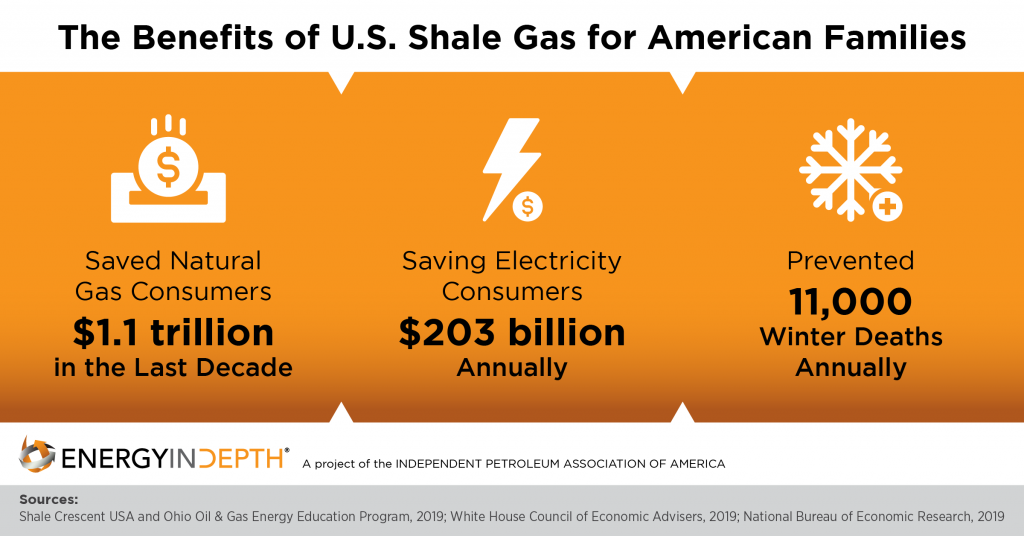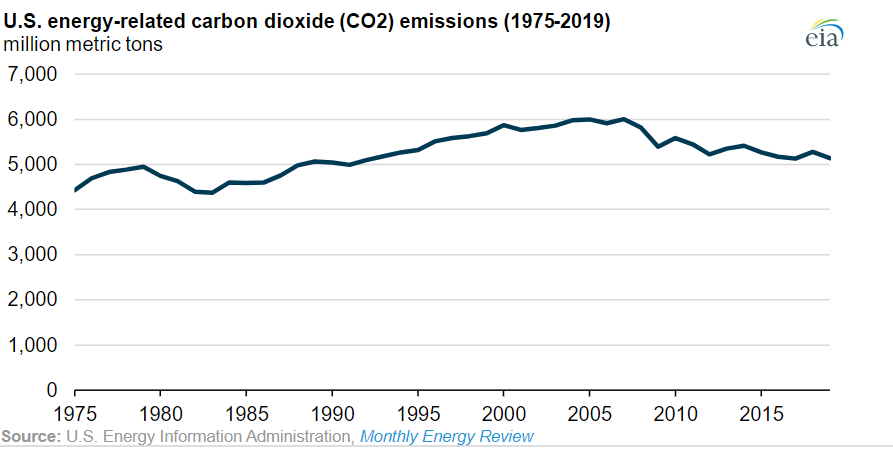While little is agreed upon across the aisle these days, we’ve seen clear evidence this election cycle that U.S. energy security is a top priority for Americans, and that both Democrats and Republicans agree oil and natural gas has an important role to play in the future.
Energy has featured prominently in races up and down the ballot, and has taken center stage in the presidential campaign. But at the end of the day, no matter which parties control the White House and Congress come January, consumers and businesses across the country know they need access to reliable and affordable energy.
That’s evident in multiple polls finding voters are more likely to back a candidate who supports oil and natural gas that’s produced here in America, including younger voters who see the value in affordable, reliable, and accessible natural gas.
As final ballots are turned in this week, here are some key reasons for this bipartisan support of oil and natural gas and why these fuels should remain strong in the years ahead regardless of who wins this week’s critical elections.
The Basics
- The Shale Revolution, driven by advances in fracking technology, enabled the United States to become a global leader in oil and natural gas production.
- In 2019, we produced approximately 5 billion cubic feet of natural gasper day in the United States.
- The United States produced roughly 2 million barrelsof oil every day in 2019. That’s enough oil to make 329.4 million crayons or to travel from California to Maine – and back – more than 527,500 times!

Reliable Energy
- American consumers and businesses can count on the strongest energy security in a generation thanks in no small part to oil and natural gas produced here in the United States, according to the Global Energy Institute’s recent annual Index of U.S. Energy Security Risk.
- The abundance of natural gas ensures a reliable energy source that will continue to be critical as the power grid further diversifies. It can be ramped up quickly to assist with intermittency issues and is the fuel of choice during emergencies because of its resiliency.
“Natural gas and nuclear must play a role in providing reliable energy because of their ability to near continuous generate power.” – Energy Secretary Dan Brouillette

Affordable Energy
- The growth in U.S. natural gas production has saved natural gas consumers $1.1 trillion over the last decade and is estimated to save electricity consumers approximately $203 billion annually.
- These incredible savings are why there is a push for increased energy infrastructure development, especially in low-income and communities of color that are especially vulnerable to high energy prices.
“[G]enerally speaking, people are debating these issues in some instances without consultation with the leaders of the African American communities and neighborhoods affected by these issues… [natural gas is] a fuel that we need to have access to because the transition to alternatives is a long-range transition.” – National Urban League President Marc Morial

Made In America
- The abundance of affordable energy is providing a reliable feedstock for manufacturing, enabling more products to be made in America. In 2019, there were 334 chemical and plastics projects, valued at a combined $204 billion, underway in the United States thanks in large part to access to natural gas and natural gas liquids.
“Growth rates in U.S. chemistry over the next five years are expected to surpass average growth over the previous 20 years. Provided that access to export markets remains open to our producers, expanding global demand will be met by shale-advantaged chemistry sourced from the U.S.” – American Chemistry Council’s Martha Moore

“One of the things that a manufacturer needs – and it doesn’t matter what you’re making – you need energy. Energy is life. All of the things that we rely on every day to make our lives clean and safe and comfortable and convenient, all of those things require energy… This is why we need absolutely as much of this energy as we can harvest.” – Pennsylvania Manufacturing Association’s David Taylor

Reducing Environmental Footprint
- The transition to natural gas has made the United States the world leader in reducing CO2 emissions and helped the U.S. power sector achieve its Clean Power Plan goals 11 years ahead of schedule.
- Natural gas for electricity generation has resulted in 57 percent more emissions reductions than renewables from 2005 to 2018.
- Combined emissions of six common pollutants dropped by 74 percent from 1970 through 2018, even as energy use and population increased. Perhaps even more impressive is that since 1970, when the Clean Air Act was passed, these emissions have declined while the U.S. economy grew by 275 percent and the American population, energy consumption and production, and vehicle miles traveled all increased.
- Water intensity for U.S. power generation – the average amount of water withdrawn per unit of total net electricity generated – decreased nearly 14 percentfrom 2014 to 2018 thanks to natural gas power plants replacing aging facilities.
“In the last 10 years, the emissions reductions in the United States has been the largest in the history of energy – almost 800 million tons – and this is a huge decline of emissions.” – International Energy Agency Executive Director Fatih Birol
 Family-Sustaining Careers
Family-Sustaining Careers
- The U.S. oil and natural gas industry supports millions of American jobs. In fact, oil and natural gas industry construction jobs – both union and non-union – provide higher pay and greater health and pension benefits compared to other industries, especially for Americans without a college degree, according to two recent studiescommissioned by the North America Building Trades Unions.
- Median pay in the sector is $117,000, well above the average salary of $77,324 for an American with an advanced degree.
- Petroleum engineering by far tops the list of highest-paid college majors, according to CNBC, and plenty of other majors making the list can be found in the industry including mining and mineral engineering, business, economics, actuarial science, and geosciences.

Source: NABTU Construction Job Quality Across the US Energy Industries
COVID-19
- The oil and natural gas industry has been pivotal in helping Americans get through a global pandemic by continuing to provide “essential” and “life-sustaining” energy. As economic demand and activity begins to ramp back up, oil and natural gas will remain the primary fuels that power the recovery.
“The global economic disruption associated with the 2020 COVID-19 pandemic has highlighted the complicated relationship between our energy supply, society’s economic strength, and humanity’s physical health. Supplies of oil and natural gas are critical to all of the sectors of society involved in fighting the virus – fueling first responder ambulances, powering hospitals, and providing raw materials for lifesaving drugs and the personal protective equipment needed by caregivers.” – U.S. Dept. of Energy

Global Impacts
- The International Energy Agency reports that natural gas will continue to play a critical role at home and abroad in both the short- and long-term.
- Thanks to robust development of LNG infrastructure, U.S. natural gas can be exported via LNG tankers to all over the world. These growing exports to markets in Europe, Asia, and elsewhere are helping other countries achieve their own emissions reductions targets through cleaner-burning natural gas.

This post appeared first on Energy In Depth.
